Expert’s Rating
Pros
- Impressive tandem-OLED display
- Speedy performance
- Brilliant camera system
- Extremely long battery life
Cons
- Not great at longer zoom lengths
- iOS-influenced software is divisive
- Frozen Berry colour won’t be for everyone
Our Verdict
The Honor Magic 6 RSR is all about luxury, with the design, display, specifications, cameras and performance all top-of-the-line. Of course, luxury goods come with luxury price tags, and the regular Magic 6 Pro definitely offers better value for money. However, if you need lots of storage, or you just fancy treating yourself to one of the flashiest mobiles around, this is an excellent choice.
Honor’s flagship Magic 6 Pro has received the Porsche Design treatment and is reborn as the Magic 6 RSR. Thankfully, unlike the Magic V2 RSR, we weren’t waiting an age for a European launch, so this model is as current as its flashy looks suggest.
The Magic 6 RSR’s Porsche-inspired looks are the most obvious change from the standard model, it stands out with a unique hexagonal camera housing, and the signature Porsche flyline running down the centre. This phone offers more than first meets the eye, though.
This model maxes out the specs, giving you double the RAM and storage of the standard Magic 6 Pro. It’s also the first phone I know of to feature a dual-layer tandem OLED display, just like Apple’s 2024 iPads. If that wasn’t enough, a new autofocus system and extended dynamic range take the cameras up a notch, too.
Luxury comes at a cost, though. With an MSRP of £1599/€1899, can this pricey handset possibly be worth the outlay? I spent a couple of weeks using it as my primary smartphone to find out.
Design & Build
- NanoCrystal Shield Glass front and rear
- 162.5 x 75.8 x 8.9 mm, 237g
- IP68 rated
The Honor Magic 6 RSR comes in two colourways, both of which are inspired by Porsche paint jobs.
I have the Frozen Berry option in for testing, which is a super-glossy light pink number. Personally, I much prefer the matte-finish Agate Grey option, but my partner thinks the Frozen Berry colour looks lovely. Either way, it’s nice to have such distinct options.
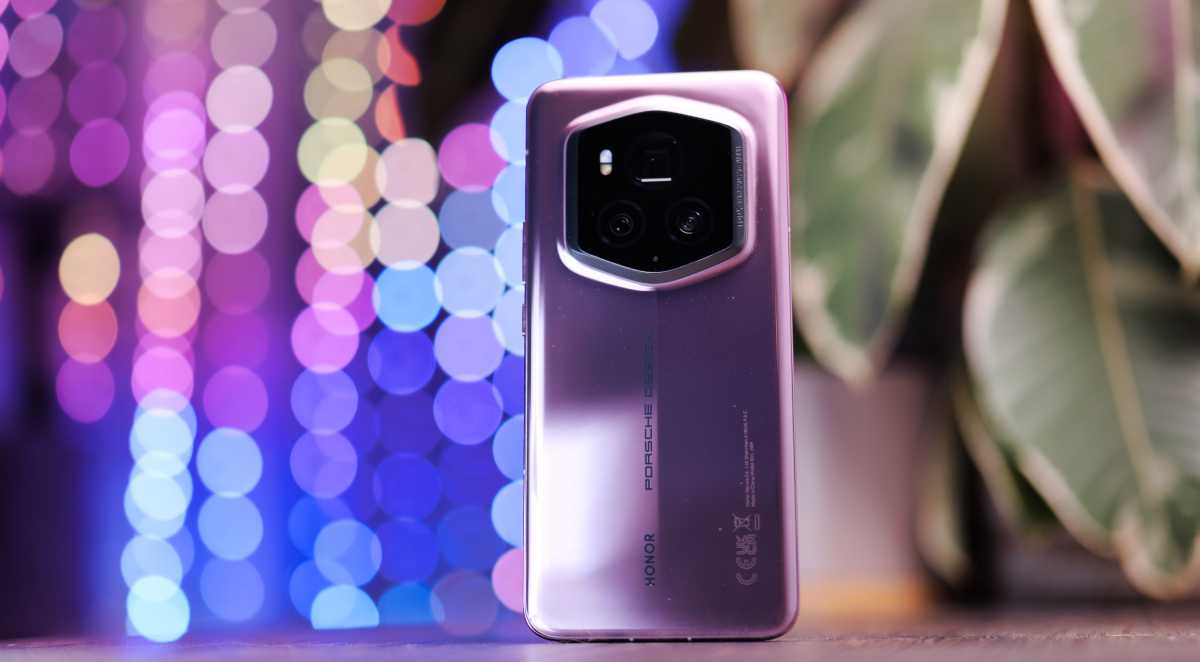
Luke Baker
Just as we saw with the Magic V2 RSR, this phone has an aerodynamic flyline running down its spine and curved glass covering the camera module with a fancy titanium bezel. The hexagonal camera surround makes it stand out in a market filled with square and circular cameras. It won’t be to everyone’s tastes, but I think the Magic 6 RSR looks great.
Again mirroring the foldable Porsche Design collaboration, the Magic 6 RSR comes with an ultra-premium case in the box. This case has a vegan leather backing and comes colour-matched to the phone. Raised stitching traces the flyline and gives the case the look and feel of a steering wheel. It’s a lovely case, the kind you’d expect to pay decent money for, rather than find included in the box.
The Magic 6 Pro is already a big and heavy phone, and with the Porsche Design bling added, it gets even heavier, now tipping the scales at 237g. Despite that, the smooth curves on all sides make it sit nicely in the hand. It’s not too top-heavy, and the hexagonal camera bump provides a nice little shelf for your forefinger to sit in.
The front and rear are covered with NanoCrystal Shield glass, which Honor says is 10 times more drop and scratch-resistant than regular glass. It even demonstrated this by hitting it with a hammer at the MWC trade show, but all I know for certain is that after a few weeks of using it without a screen protector, it still looks spotless. It’s also IP68 certified, so it’s unphased by a quick dunk in some water or exposure to dust.
It won’t be to everyone’s tastes, but I think the Magic 6 RSR looks great
The haptic motors are plenty powerful and precise enough to give some nice feedback when typing. I’d say they’re not quite as impressive as Samsung’s Galaxy S24 series, but they’re not far off.
Screen & Speakers
- 120Hz 6.8-inch OLED display
- 5000 nits, 1280 x 2800 resolution
- Stereo speakers
One of the biggest upgrades that comes with the Magic 6 RSR is the new tandem OLED display. This tech is designed to make your display last much longer, while still outputting extremely high brightness levels. Honor says it should last 600 times longer than a traditional OLED display, and will lose less than 1% of brightness output after three years of regular use.
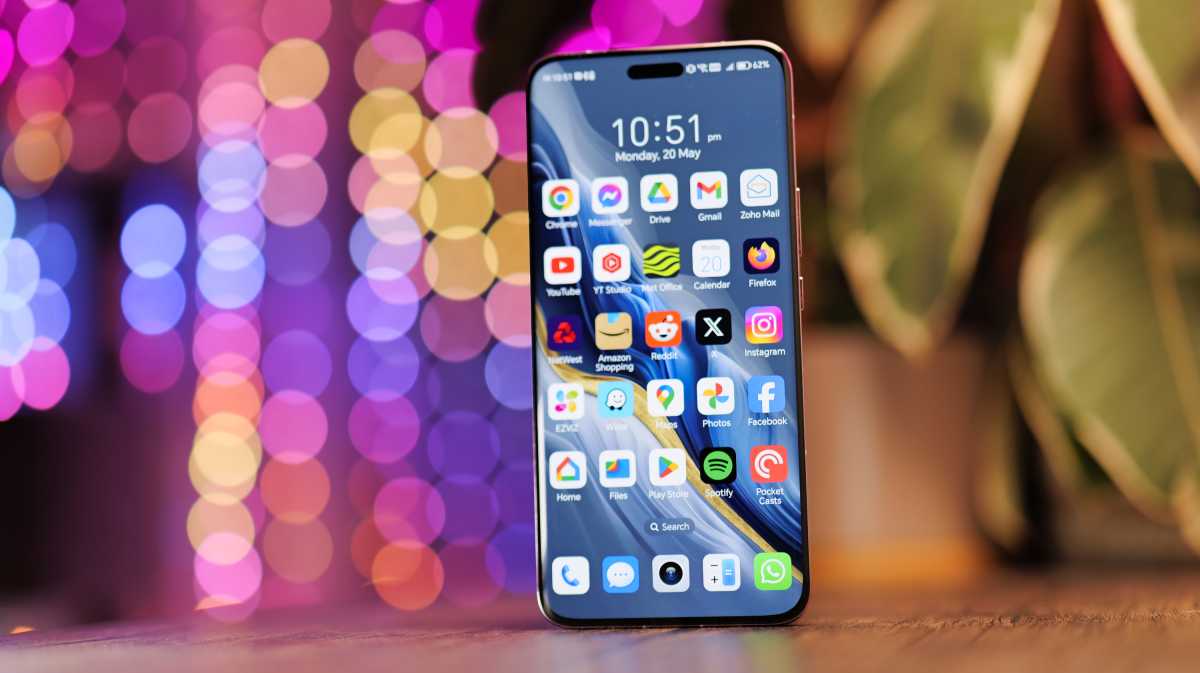
Luke Baker
We all love bright displays – they make your phone look way better when you’re out in the bright sunlight – but the higher the brightness output, the greater the chance of failure.
A tandem OLED panel gets around this issue by stacking two OLED panels on top of each other. Each display only needs to run at half brightness for the same total output, which equates to less stress on each panel.
The quoted peak brightness is the same as the Magic 6 Pro, but that’s already one of the brightest panels on the market, boasting an astonishing 5000 nits. The only practical difference is that it should stay looking its best for far longer.
Obviously, I can’t really talk about the longevity, as I’ve only used the phone for a couple of weeks, but it’s a nice bit of reassurance if you plan on keeping the phone for a long time.
The screen looks absolutely stunning, especially when playing back HDR content
Otherwise, the display is very similar to the Magic 6 Pro. You get the same 120Hz adaptive refresh rate, the same 1280 x 2800 pixel resolution, and it has the same curved-edge design. When we reviewed the Magic 6 Pro, we said it had one of the best displays around, and that’s just as true with the RSR.
The screen looks absolutely stunning, especially when playing back HDR content. The larger-than-usual pill-shaped camera cut-out is sure to annoy some users, though.
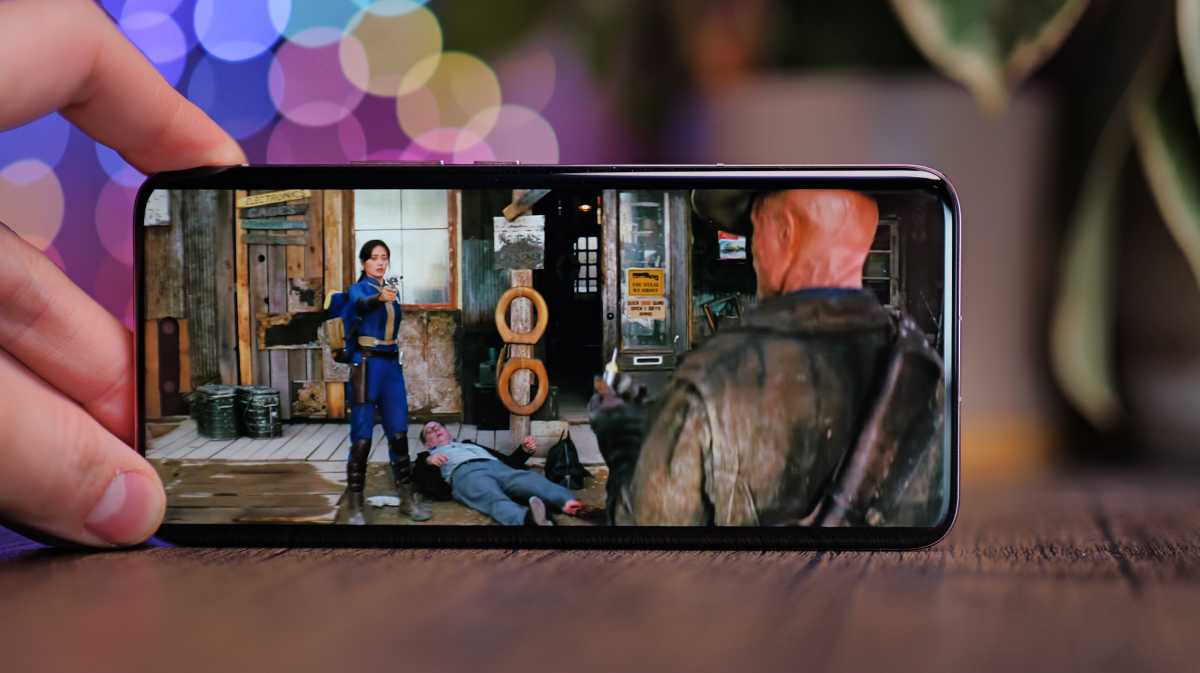
Luke Baker
I normally prefer flat displays, but I think the curvature of the Magic 6 RSR works to its advantage. This is a big phone, and the curved edges make it much easier to grip. It’s a sharp enough angle that you won’t experience many phantom touches and a smooth radius on all sides makes gesture controls feel very natural.
The phone has stereo speakers positioned on the top and bottom sides, and thankfully, they’re positioned as such that they rarely get muffled by your palms in landscape mode.
They can get reasonably loud, but they’re far from the loudest I’ve come across. More importantly, though, they don’t distort – even at max volume. There’s a good amount of low-end response too, it’s quite impressive.
Specs & Performance
- Qualcomm Snapdragon 8 Gen 3
- 24GB RAM
- 1TB storage
The Magic 6 RSR is powered by the same Snapdragon 8 Gen 3 chip as the Magic 6 Pro, only this time, the RAM and storage capacities are doubled. 24GB of RAM and 1TB of storage sound more like laptop specifications than something you’d find stuffed in a phone.
No amount of multitasking is likely to slow this beast down, and you can store a wild amount of media. In practice, it means that the phone feels lightning-quick, no matter what you’re doing on it, and it’s excellent for gaming, too.
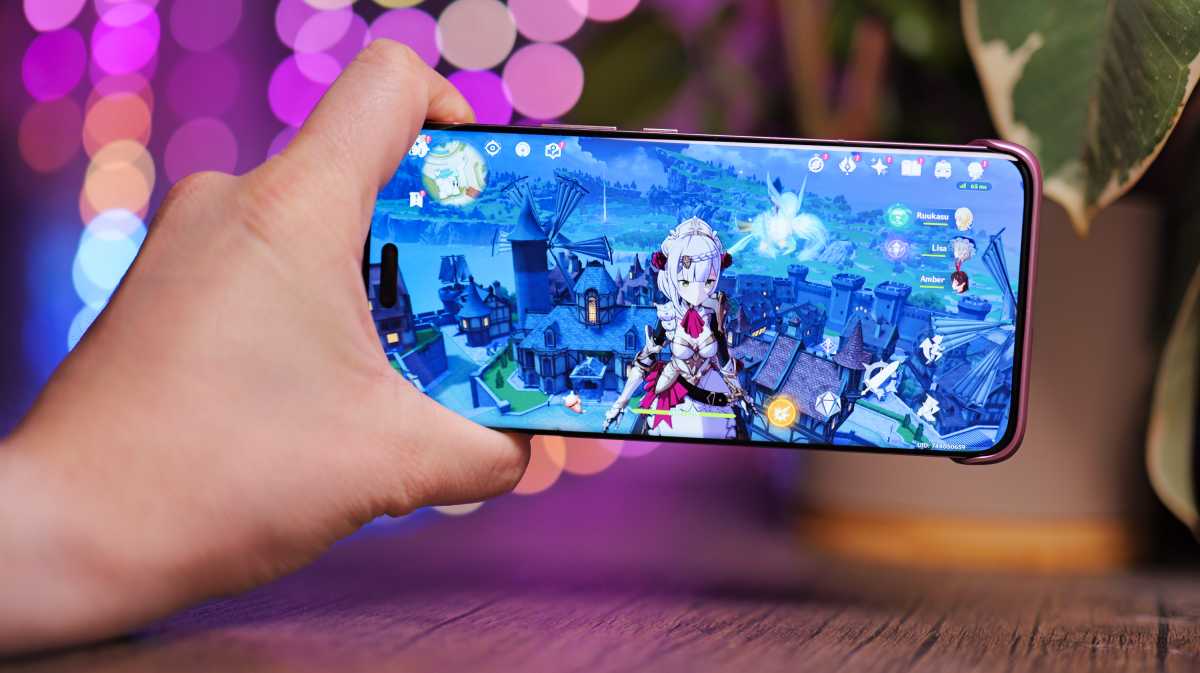
Luke Baker
I booted up my usual performance touchstone, Genshin Impact, and it ran at maximum graphical settings in 60fps without breaking a sweat. Even after 30 minutes of non-stop action, the phone barely got warm – it’s impressive stuff.
Even after 30 minutes of non-stop action, the phone barely got warm
Most users are unlikely to notice much of a difference with the extra RAM, but having so much storage space is just luxurious. You’ll likely never need to worry about deleting large video files, or cleaning up seldom-used apps, there’s so much space here that you can just keep everything handy.
Honor Magic 6 RSR benchmarks
Cameras
- 50Mp main sensor with LiDAR AF
- 50Mp ultrawide
- 180Mp telephoto
- 50Mp selfie camera
For the most part, the camera specifications are identical to the Magic 6 Pro, but there are two significant changes with this model.
The first is that the main sensor uses LiDAR autofocus, rather than the laser-based autofocus of the Magic 6 Pro. The second is that the main sensor now captures up to 15 stops of dynamic range, up from 13.5 stops.
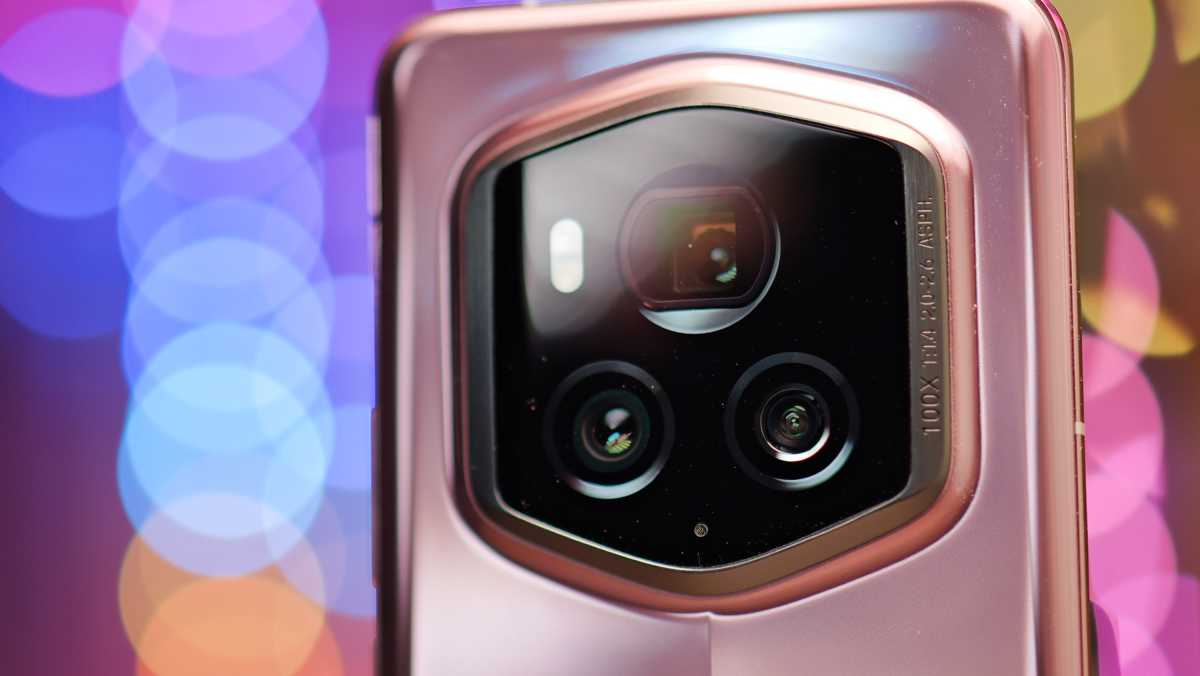
Luke Baker
I didn’t have the Magic 6 Pro on hand to test the two cameras side by side, but the autofocus does seem slightly faster, and it’s better at sticking to subjects and tracking them throughout the frame, too. It’s exactly what you want from a camera that’s so good at capturing fast-moving subjects.
As for the dynamic range, I didn’t notice a massive difference. The Magic 6 Pro already did well in that regard, and I suspect scenes that take advantage of the extra stop-and-a-half are few and far between.
Otherwise, the experience is almost identical to the Magic 6 Pro, and that’s a good thing. This phone can take excellent shots in all lighting conditions, delivering vibrant and sharp images that really pop. The images might be a little over-saturated for photography purists, but the colours are accurate they look exciting without any edits, making them great for social media.
This phone can take excellent shots in all lighting conditions, delivering vibrant and sharp images that really pop
Portrait mode works brilliantly on this phone, with excellent edge detection and plenty of control over the blur effects. Night photography is impressive, too, with the relatively large main and telephoto sensors and wide apertures allowing for quick exposure times and natural-looking lighting.
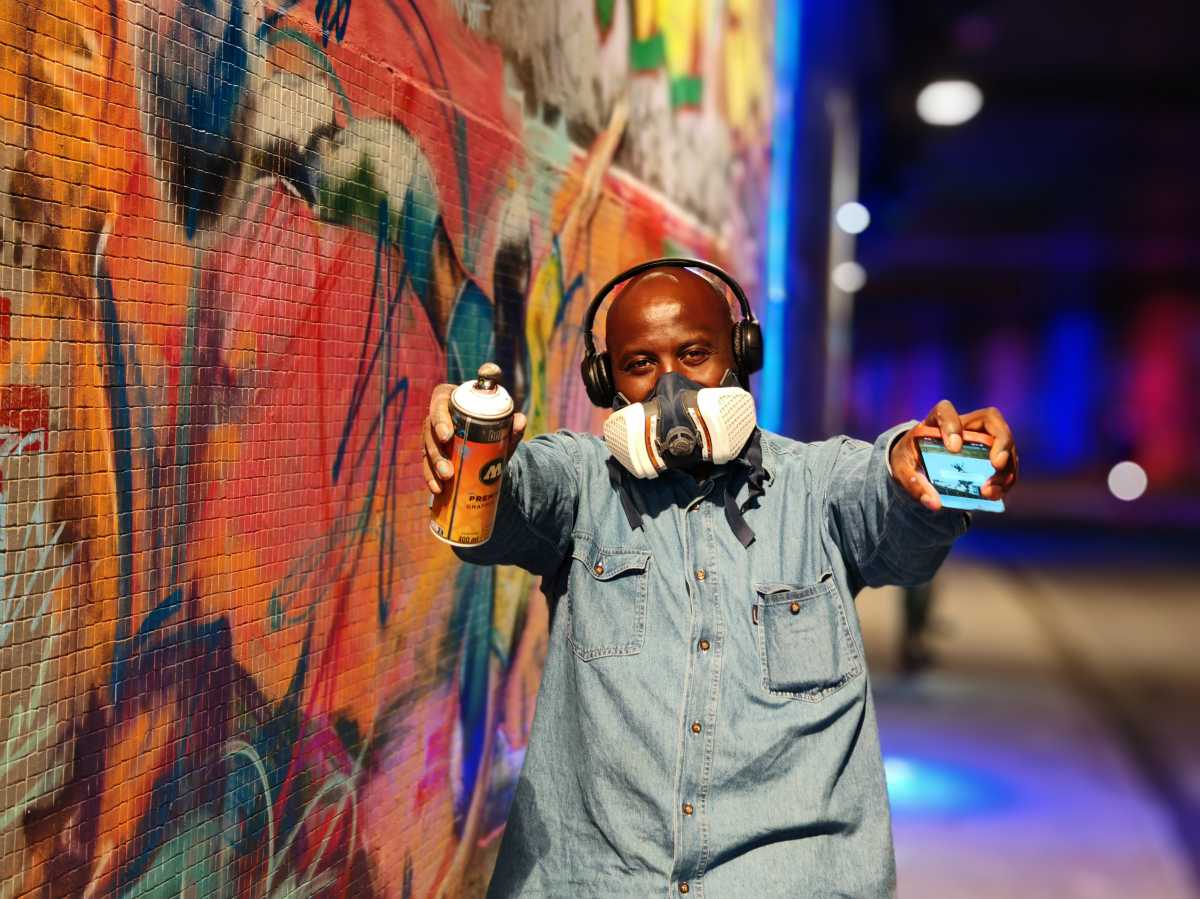
Luke Baker
One area where this phone begins to struggle, though, is with longer telephoto zoom levels. The periscope telephoto camera only has a 2.5x lens, but it attempts to compensate for this with a massive 180Mp resolution.
It works to an extent, 5x shots look superb, and 10x shots are decent, too. However, if you venture beyond that, the Magic 6 RSR falls well short of the competition. The camera offers a maximum zoom of 100x, but anything above 20x is sure to lead to disappointment.
That said, the opposite is true at 2.5x zoom. Most other phones will be digitally cropping from the main sensor at this focal length, so the Magic 6 RSR is almost guaranteed to look better. So, if you’re thinking of picking this one up, definitely consider which focal lengths you like to use the most.
I’m a big fan of the ultrawide because it’s wider than most of the competition. You can squeeze so much into the frame, to the point where I often accidentally got my hand in the shots. It does struggle in low-light conditions, though, so it’s best to stick to the main and telephoto when it gets darker.
The Magic 6 RSR can shoot video at up to 4K60 on all the cameras and the footage is quite impressive. Stabilisation is superb in the daylight, but you can expect a few jitters in low-light conditions. There’s a huge amount of professional options in the default camera app, too, including a LOG profile, manual controls and even the ability to apply LUTs.
Battery Life & Charging
- 5600 mAh battery
- 80W wired charging
- 66W wireless charging
Whether you opt for the fancy Porsche Design model or the standard Magic 6 Pro, you can expect some of the best battery performance of any modern flagship. Both models use silicon-carbon battery tech to squeeze a massive 5600mAh battery into a relatively slim chassis, and the results are amazing.
An average day’s use usually saw me going to bed with 40% or more remaining, if you use your phone somewhat sparingly, you could easily achieve two days on a single charge. Considering this is running Qualcomm’s most powerful chip, and it has one of the brightest OLED panels on the market, that’s really saying something.
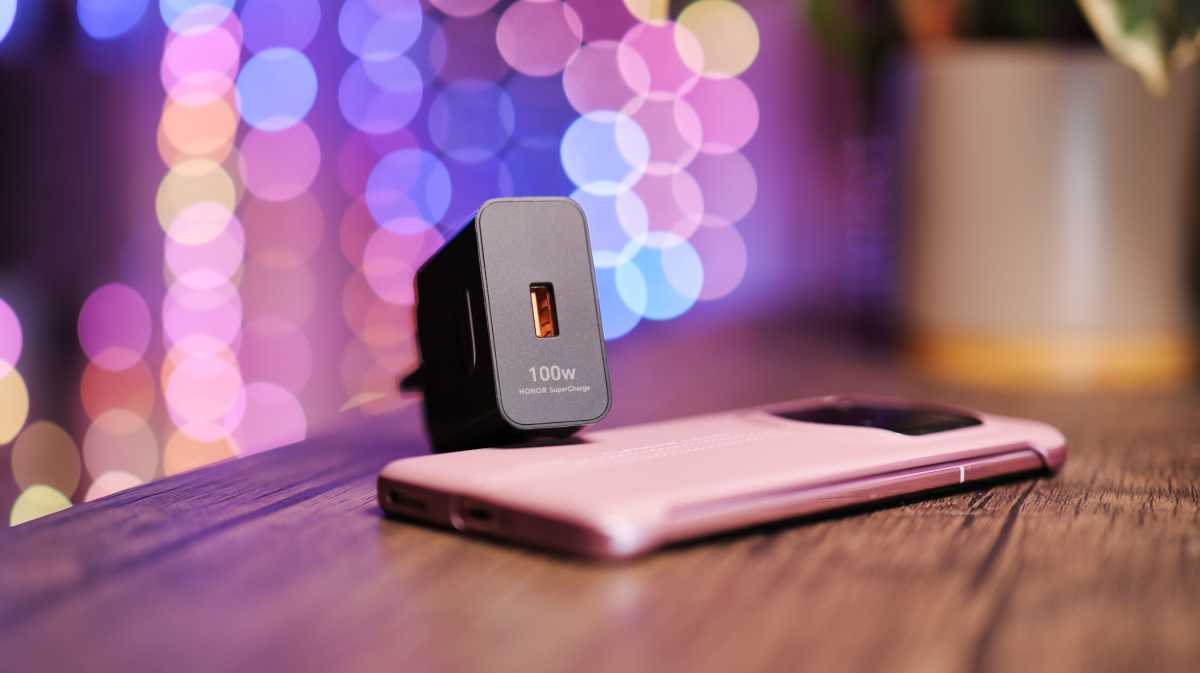
Luke Baker
Unlike most of Honor’s devices, the Porsche Design collaborations tend to come with a charger in the box, too. In this case, my unit shipped with both a UK and a…

